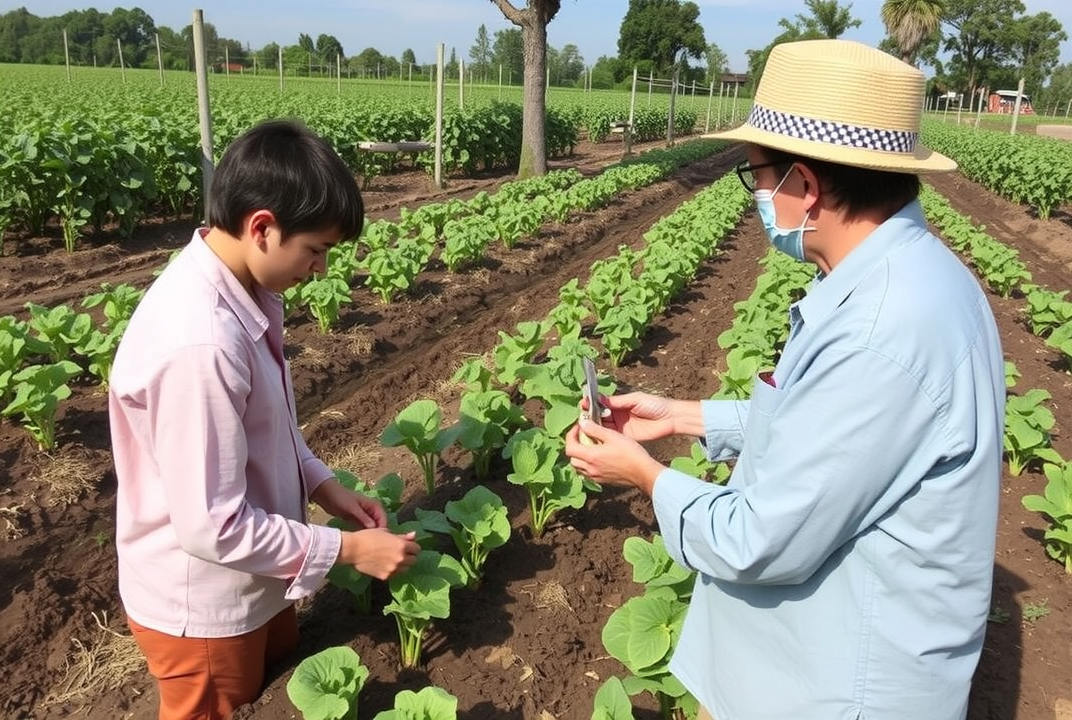Consumer Preferences Shaping Agricultural Market Trends

Introduction
Have you ever wondered how your shopping choices impact the world of agriculture? Consumer preferences are a powerful driver in the agricultural sector, influencing everything from the types of crops grown to farming methods used. This article explores the intricate connection between consumer preferences and agricultural market trends, highlighting current changes and future predictions.
The Growing Demand for Organic Produce
In recent years, the demand for organic produce has surged. Consumers are increasingly aware of health, environmental, and sustainability issues and prefer organic options. This shift in demand impacts farmers, pushing them towards more sustainable practices, often at a higher initial cost but with potential long-term benefits.
Organic certification requires farmers to adhere to specific guidelines that avoid synthetic pesticides and fertilizers, enhancing soil health and biodiversity. This certification not only fulfills consumer demand but can also open doors to premium markets.

Influence of Local and Seasonal Preferences
Local produce preference has seen an upswing as consumers seek freshness and a lower carbon footprint. Seasonal eating aligns with this trend, promoting crops available naturally during specific times of the year. This behavior influences planting and harvesting schedules and encourages diversity in farming.
Farmers often collaborate with local markets and community-supported agriculture (CSA) systems to meet the demand. While it supports local economies, it also strengthens the farmer-consumer relationship, enhancing transparency and trust.
Rise of Plant-Based Diets
The rise of plant-based diets has significantly impacted consumer preferences, leading to increased diversification in crop production. More consumers are shifting towards plant-based proteins, sparking higher demand for crops like lentils, chickpeas, and soybeans.
This shift presents challenges and opportunities for farmers. Adjusting to these preferences may require investments in infrastructure and knowledge transfer but can also lead to more resilient agricultural practices.

Impact on Commodity Markets
Consumer preferences affect commodity markets by altering supply and demand dynamics. For instance, the trend towards gluten-free diets has boosted the market for alternative grains like sorghum and millet.
Farmers might see fluctuations in commodity prices depending on consumer-led demand shifts, influencing strategic planning and risk management.
Technological Integration in Response to Consumer Demand
Technological advancements have become crucial in predicting and responding to consumer trends. Precision agriculture, data analytics, and IoT devices enable farmers to optimize production efficiency and adapt more quickly to changing demands.
These technologies help in monitoring crop health, weather patterns, and market prices, allowing for informed decision-making through data-driven insights.
Sustainability and Ethical Practices
Consumers are increasingly aware of ethical sourcing and sustainability issues, prompting businesses to adapt. Transparency in supply chains is now a priority, leading to the implementation of tracking systems that provide detailed product histories.
Sustainable practices, such as reduced water use and regenerative farming, have gained momentum. These practices enhance soil health, reduce environmental impact, and meet the core values of many consumers today.

Future Directions and Predictions
Looking ahead, consumer preferences will continue to evolve, further shaping agricultural market trends. Trends like vertical farming, urban agriculture, and personalized nutrition are on the rise, promising significant shifts in how we approach farming.
Continuous adaptation to consumer demands will help ensure that the agricultural sector remains robust and capable of meeting modern challenges.
Conclusion
Understanding consumer preferences is critical for the agriculture sector's adaptability and growth. By aligning with these preferences, the industry not only meets demand but also embraces innovation and sustainability. As a consumer, your choices play a vital role in directing these trends, reflecting the collective power of informed decisions.
Engage in local markets, support sustainable practices, and stay informed about your food's journey from field to table. These steps not only benefit personal health and the environment but also support a resilient agricultural market.